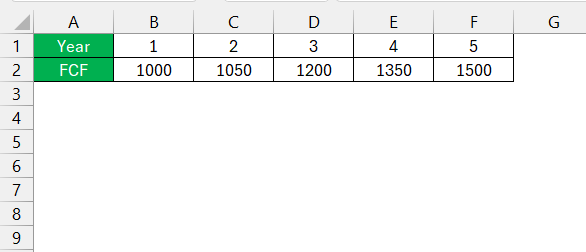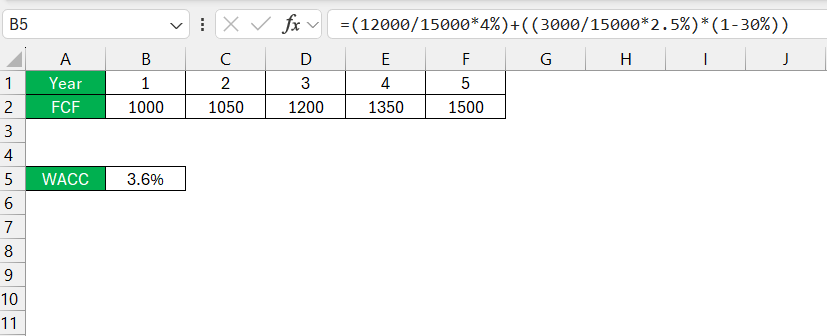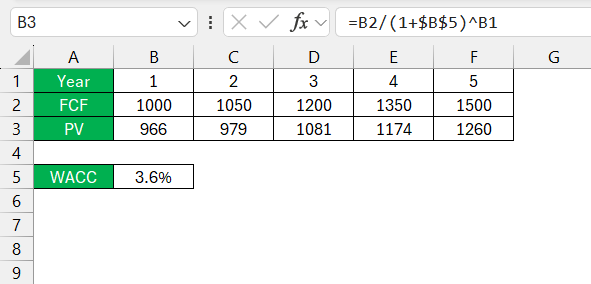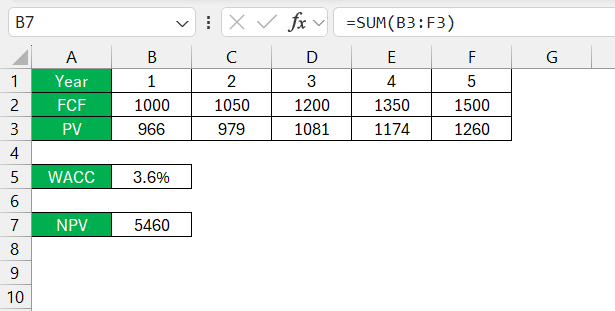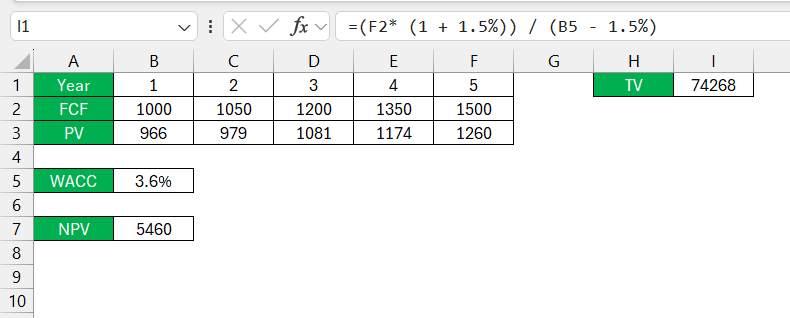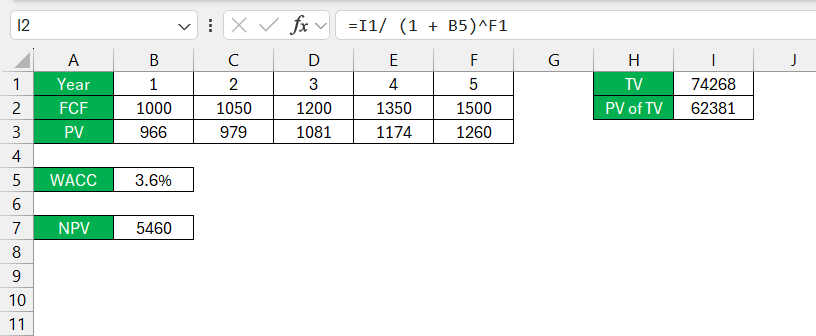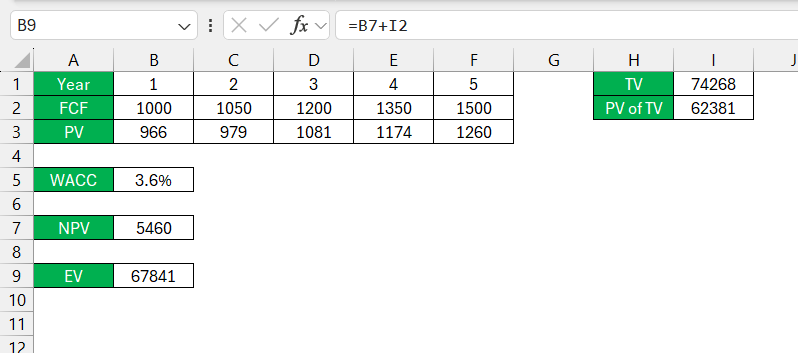As someone who regularly works with financial modeling, I find that the Discounted Cash Flow (DCF) model is one of the most powerful tools for valuing a business or investment. In this guide, I’ll walk you through the step-by-step process of creating a discounted cash flow model in Excel.
Key Takeaways:
- DCF analysis helps determine an investment’s present value by discounting future cash flows.
- Excel is the preferred tool for DCF analysis due to its formulas, flexibility, and ease of sensitivity analysis.
- Accurate cash flow projections are crucial, requiring historical data, market trends, and economic insights.
- Choosing the right discount rate, often WACC, is essential for a reliable valuation.
- Regularly updating and reviewing a DCF model ensures it remains relevant and accurate.
Table of Contents
Unlocking the Mysteries of DCF in Excel
The Basics of Discounted Cash Flow Analysis
Understanding the basics of Discounted Cash Flow (DCF) Analysis is a vital stepping stone for anyone in the realm of finance or investing. It’s a method used to evaluate the attractiveness of an investment opportunity, considering the time value of money—a dollar today is worth more than a dollar tomorrow.
In essence, DCF analysis helps me determine the present value of an investment based on its projected future cash flows. The process involves forecasting the cash inflows and outflows associated with a project or investment, and then discounting those future cash flows back to their present value using a discount rate. This rate typically reflects the risk or the cost of capital associated with the investment.
When conducting this analysis, I often ask the following: Does the present value of future cash flows exceed the current cost of investment? If the answer is yes, the investment is generally considered to be a good opportunity.
Why Excel is the Go-To Tool for Finance Professionals
Excel reigns supreme as the go-to tool for finance professionals when it comes to performing a DCF analysis, and there are solid reasons for its popularity. Its sophisticated formulae and functions, like NPV (Net Present Value) and IRR (Internal Rate of Return), provide the precision and flexibility I need for complex calculations. The grid layout allows for seamless organization of cash flow data and facilitates the application of the discount rate to determine the present value of future cash flows.
Further enhancing its appeal is Excel’s ability to enable me to conduct sensitivity analyses by adjusting inputs and immediately seeing the impact on results. With Excel, I can model different scenarios with ease, providing a comprehensive view of potential outcomes which aids in making informed investment decisions. Since Excel is so widely adopted, the skills to build and understand DCF models in it are nearly universal in the finance industry, ensuring smooth collaboration and communication of financial insights.
Laying the Groundwork: Essential Inputs for DCF
Estimating Your Future Cash Flows Accurately
Accurately estimating future cash flows is like trying to hit a moving target, but it’s a crucial part of the DCF process. It’s relatively straightforward to project cash flows for the immediate future, like year 1. However, the difficulty surges as I look to predict years 2, 3, 4, and beyond—when predictions can verge on educated guesswork, especially in volatile industries. It’s essential for me to draw upon historical data, understand industry trends, and consider economic forecasts to improve the accuracy of these projections.
I must also grapple with the “garbage in, garbage out” principle: any errors in early cash flow projections can exponentially distort future values. This means that I need to be meticulous early on to reduce the risk of significant deviations later. When estimating cash flows, I should factor in things like projected sales growth, expenses, capital expenditures, and working capital requirements. By stringently analyzing all these factors, I refine my projections and enhance the reliability of the DCF model.
Finding the Right Discount Rate
Finding the right discount rate is pivotal to the integrity of any DCF model. It serves as the investor’s yardstick of minimum acceptable return, taking into account the time value of money and the risk of the investment. A discount rate that’s too low might overvalue the investment, while one that’s too high might lead to undervaluation.
For public companies, I can start with the Weighted Average Cost of Capital (WACC), which reflects the blended cost of both equity and debt capital. For private investments or projects with unique risk profiles, I might lean more on the required rate of return which incorporates an investor’s individual risk tolerance. Since DCF analysis is so dependent on this factor, I must ensure it accurately reflects market conditions, the opportunity cost of capital, and the risk associated with alternative investments of a similar nature.
Sometimes, a blended discount rate might be required, considering different scenarios such as changing interest rates or specific project risks, to better tailor the DCF to reflect possible futures.
Step-by-Step: Crafting a DCF Model in Excel
Step 1: Gather the Required Data
To build a DCF model in Excel, I’ll need the following inputs:
- Projected free cash flows (FCF)
- Discount rate (WACC)
- Terminal value
- Growth rate
These inputs can be gathered from financial statements, market analysis, and industry reports.
Step 2: Create a Free Cash Flow Projection
I start by forecasting the company’s free cash flow for a specific number of years (typically 5 to 10 years). In Excel, I list the projected years in row 1 and the corresponding FCF for each year in row 2.
Step 3: Determine the Discount Rate (WACC)
The discount rate is crucial for valuing the cash flows correctly. The Weighted Average Cost of Capital (WACC) formula is:
WACC = (E/V x Re) + ((D/V x Rd) x (1 – T))
Where:
- E = Market value of equity
- D = Market value of debt
- V = Total value (E + D)
- Re = Cost of equity
- rd = Cost of debt
I input these values into Excel and use formulas to compute the WACC.
Step 4: Calculate the Present Value of Cash Flows
Next, I discount each year’s FCF using the formula:
PV = FCF / (1 + WACC)^t
Where t is the year number.
I sum up all the present values to get the Net Present Value (NPV) of projected cash flows.
Step 5: Estimate the Terminal Value
Beyond the forecast period, I calculate the Terminal Value (TV) using the Gordon Growth Model:
TV =(Final Year FCF * (1 + Growth Rate)) / (WACC – Growth Rate)
Where g is the perpetual growth rate
Then, I discount the terminal value using:
PV of TV = TV / (1 + WACC)^t
Step 6: Calculate the Enterprise Value
I sum the present values of all projected FCFs and the discounted terminal value:
EV = NPV of FCF + PV of TV
Best Practices and Troubleshooting Tips
Keeping It Simple yet Comprehensive
Striking a balance between simplicity and comprehensiveness in a DCF model is a fine art. The model should be elaborate enough to capture the complexities of the business or investment being analyzed, but not so convoluted that it becomes a web of impenetrable formulas and assumptions. I make sure to focus on the key value drivers: revenue, growth rate, operating margins, capital expenditures, working capital needs, and the cost of capital. These core components are the backbone of the model and provide a robust yet clear view of an investment’s worth.
Moreover, I avoid incorporating extraneous details that might obfuscate the main analysis. Overfitting with too many variables can create an illusion of precision without providing actual clarity. The key lies in ensuring that each added detail has a justifiable impact on the valuation, and isn’t included simply because the data is available.
Regular Reviews – Making Sure Your Model Stays Relevant
Keeping a DCF model up to date is essential for it to remain relevant and accurate. The business environment can change rapidly, and so should my model. I ensure that I revisit and revise the DCF periodically, adjusting it for new data and revised forecasts. It’s a process akin to a mechanic tuning an engine: necessary adjustments keep the model running smoothly and reflecting reality as closely as possible.
I compare the projections in the DCF model against real outcomes as soon as enough data is available, using the insights to fine-tune future projections. This habit helps me calibrate my model and develop a more accurate forecasting ‘instinct’ over time.
Furthermore, I maintain transparency by documenting all assumptions, such as growth rates and capital expenditures. This practice not only allows others to follow my reasoning but also aids in the annual review process to verify that my assumptions are still valid or if they need revision.
FAQs: Your Questions about Excel and DCF Answered
What is the main purpose of DCF analysis?
DCF analysis helps determine the present value of an investment by discounting its expected future cash flows. This method accounts for the time value of money, ensuring that future earnings are appropriately valued today. It is widely used to assess whether an investment is financially viable.
Why is Excel commonly used for DCF modeling?
Excel is the preferred tool for DCF modeling because it offers built-in functions like NPV (Net Present Value) and IRR (Internal Rate of Return). These functions simplify complex calculations, making it easier to analyze different financial scenarios. Additionally, Excel’s flexibility allows users to customize models and conduct sensitivity analyses.
How do I determine the right discount rate?
The discount rate reflects the risk and opportunity cost of an investment, with WACC (Weighted Average Cost of Capital) being the most common choice. WACC blends the cost of equity and debt to provide an accurate measure of required returns. If an investment has unique risks, adjustments may be needed to align with investor expectations.
What is the terminal value in a DCF model?
The terminal value estimates the worth of an investment beyond the projected forecast period. It is often calculated using the Gordon Growth Model, which assumes a perpetual growth rate. Since most of an investment’s value can come from this component, selecting reasonable growth assumptions is crucial.
How often should I update my DCF model?
A DCF model should be updated regularly to reflect new financial data, economic conditions, and business performance. Significant changes in revenue, expenses, discount rates, or market trends warrant an immediate review. Keeping the model current ensures more accurate valuation and better decision-making.
John Michaloudis is a former accountant and finance analyst at General Electric, a Microsoft MVP since 2020, an Amazon #1 bestselling author of 4 Microsoft Excel books and teacher of Microsoft Excel & Office over at his flagship MyExcelOnline Academy Online Course.

